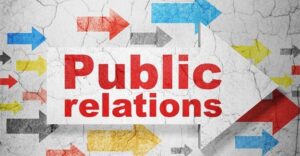Successful PR programs often leverage data to drive strategy and measure effectiveness. Here are some real-life examples of PR campaigns that have used data effectively to achieve their goals:
- Coca-Cola’s “Share a Coke”
Agency: Ogilvy
Data Strategy: Coca-Cola used data to personalize their product packaging with popular names and nicknames. They analyzed regional name popularity and demographic data to create a list of names that resonated with target audiences.
Success: The campaign led to a 2% increase in sales in the US, and a significant rise in social media engagement, with people sharing photos of their personalized Coke bottles.
- Spotify’s “Wrapped”
Agency: Spotify In-House
Data Strategy: Spotify uses data from user listening habits to create personalized year-end summaries for each user. This data-driven approach allows users to see their most played songs, artists, and genres.
Success: The campaign generates massive engagement annually, with users sharing their Wrapped summaries on social media. It also drives media coverage and increases user retention.
- Nike’s “Breaking2”
Agency: Nike In-House
Data Strategy: Nike’s campaign aimed at breaking the two-hour marathon barrier involved extensive data analysis on athletes’ performance, running conditions, and biomechanics. They used this data to optimize training, equipment, and race conditions.
Success: Although the sub-2-hour marathon was not achieved, the campaign generated significant media buzz and showcased Nike’s innovation, contributing to a 10% increase in brand favorability.
- Airbnb’s “Belong Anywhere”
Agency: Airbnb In-House
Data Strategy: Airbnb used data to understand the preferences and pain points of both hosts and guests. They analyzed booking patterns, reviews, and user feedback to craft a campaign that emphasized the emotional connection and sense of belonging.
Success: The campaign led to a substantial increase in brand recognition and bookings, with Airbnb seeing a 13% increase in new listings and a 7% boost in overall bookings.
- The ALS Association’s “Ice Bucket Challenge”
Agency: The ALS Association In-House
Data Strategy: The campaign harnessed data from social media to track participation rates and viral reach. They also used real-time data to adjust their outreach and engagement strategies.
Success: The Ice Bucket Challenge raised over $115 million for ALS research and significantly increased awareness of the disease, with a notable spike in donations and media coverage.
- Old Spice’s “The Man Your Man Could Smell Like”
Agency: Wieden+Kennedy
Data Strategy: Old Spice analyzed consumer behavior and trends to create a campaign that would resonate with both men and women. They used social media data to drive their response strategy, including creating personalized video responses to user comments.
Success: The campaign increased Old Spice’s sales by 125% and won numerous awards for its innovative use of data-driven content and social media engagement.
- McDonald’s “Our Food. Your Questions.”
Agency: DDB Chicago
Data Strategy: McDonald’s used data from consumer feedback and social media to address concerns about their food quality. They created a transparent campaign that answered real customer questions about ingredients and preparation processes.
Success: The campaign improved McDonald’s brand perception and transparency, leading to positive media coverage and a boost in consumer trust.
- Burberry’s “Art of the Trench”
Agency: Burberry In-House
Data Strategy: Burberry analyzed data on fashion trends and social media engagement to create a campaign focused on their iconic trench coats. They encouraged users to share their own photos of the trench coat, leveraging user-generated content.
Success: The campaign significantly boosted Burberry’s online engagement and social media presence, with a 50% increase in traffic to their website.
- T-Mobile’s “Un-carrier”
Agency: T-Mobile In-House
Data Strategy: T-Mobile used market research data to identify pain points in the mobile carrier industry, such as hidden fees and contracts. They designed their campaign to address these issues directly and promote their transparent pricing model.
Success: The campaign helped T-Mobile gain millions of new subscribers and improve its market position, with a 30% increase in customer growth.
- The Guardian’s “#KeepItOn”
Agency: The Guardian In-House
Data Strategy: The Guardian used data on internet shutdowns and digital rights abuses to drive their campaign. They created interactive maps and infographics to highlight the impact of internet censorship around the world.
Success: The campaign raised awareness about internet freedom and influenced policy discussions, leading to increased support for digital rights and greater media coverage.
- Barclays “#BarclaysLifeSkills”
Agency: Barclays In-House
Data Strategy: Barclays analyzed data on youth unemployment and skills gaps to develop a campaign aimed at improving career prospects for young people. They used this data to tailor their online resources and workshops.
Success: The campaign helped over 1 million young people gain new skills, with a measurable impact on employability and positive media coverage for Barclays.
- Lego’s “Rebuild the World”
Agency: Lego In-House
Data Strategy: Lego used data on consumer sentiment and engagement to create a campaign that emphasized creativity and imagination. They incorporated user-generated content and interactive elements into their campaign strategy.
Success: The campaign increased Lego’s brand engagement and social media presence, leading to a 7% increase in sales.
- Etsy’s “Etsy Resolution”
Agency: Etsy In-House
Data Strategy: Etsy used data from user behavior and purchase trends to create a campaign focused on New Year’s resolutions and personal goals. They highlighted unique, handmade items that aligned with popular resolutions.
Success: The campaign drove a significant increase in traffic to the Etsy site and boosted sales of featured products.
- Red Bull’s “Stratos”
Agency: Red Bull Media House
Data Strategy: Red Bull used data to plan and execute Felix Baumgartner’s space jump, analyzing variables like altitude, weather conditions, and media reach. They used this data to create a global live-stream event.
Success: The campaign garnered millions of views worldwide and significantly boosted Red Bull’s brand visibility and engagement.
- Intel’s “Meet the Makers”
Agency: Intel In-House
Data Strategy: Intel analyzed data on tech enthusiasts and creators to develop a campaign showcasing innovative uses of their technology. They used targeted digital ads and influencer partnerships to reach their audience.
Success: The campaign increased brand awareness and engagement among tech-savvy audiences, leading to higher sales and positive media coverage.
These examples illustrate how leveraging data can enhance the effectiveness of PR campaigns by tailoring messages, optimizing engagement strategies, and measuring outcomes to drive success.




